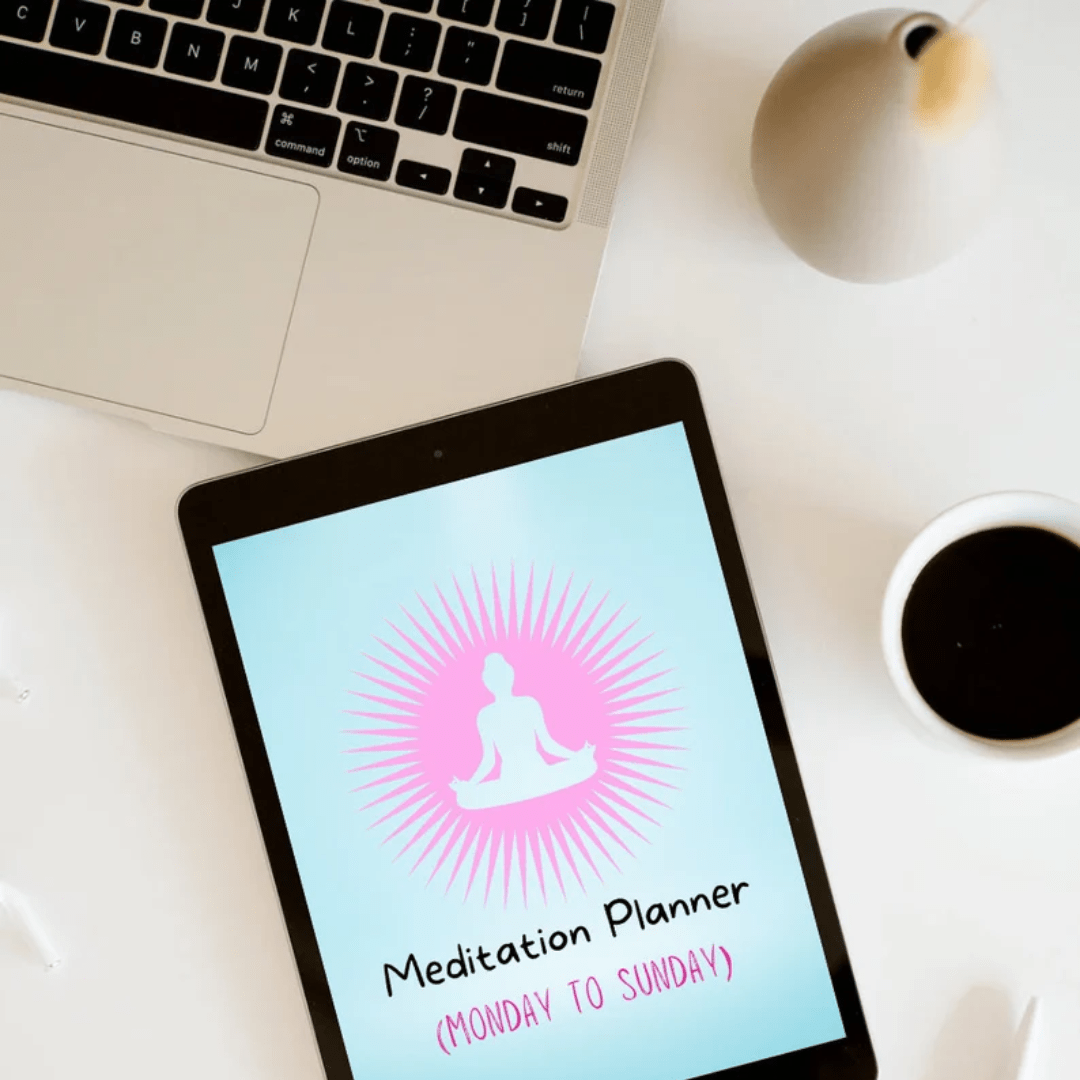Introduction
Importance of Meditation for Achieving Inner Peace and Emotional Well-being
Meditation is a powerful practice that can lead to profound inner peace and emotional well-being. In today’s fast-paced world, where stress and anxiety have become common, taking time for meditation can bring a sense of calm and balance to our lives.
Scientific studies have shown that regular meditation practice has numerous benefits for our mental and emotional health. By focusing our attention and quieting the mind, meditation allows us to cultivate a deep sense of inner peace. It helps us detach from negative thoughts and emotions, promoting a more positive and serene state of being.
Moreover, meditation is a valuable tool for managing stress. By practicing mindfulness and being fully present at the moment, we can reduce the impact of external pressures on our emotional well-being. Meditation also enhances our ability to regulate our emotions, making us more resilient and less reactive to challenging situations.
Brief Overview of the Benefits of Regular Meditation Practice
Regular meditation practice offers a wide range of benefits that extend beyond inner peace and emotional well-being. Some key advantages include:
- Reduced Stress and Anxiety: Meditation helps activate the relaxation response in our bodies, reducing the production of stress hormones and promoting a sense of calmness.
- Improved Focus and Concentration: By training our minds to stay present, meditation enhances our ability to concentrate and maintain focus in our daily activities.
- Enhanced Self-awareness: Through meditation, we develop a deeper understanding of our thoughts, emotions, and behavioral patterns, leading to greater self-awareness and personal growth.
- Increased Compassion and Empathy: Meditation cultivates qualities of loving-kindness and compassion towards ourselves and others, fostering healthier relationships and social connections.
- Better Emotional Regulation: Regular practice of meditation equips us with the skills to navigate and regulate our emotions, reducing impulsivity and promoting emotional stability.
- Boosted Immune System: Research suggests that meditation can positively impact our immune system, leading to improved overall health and well-being.
Throughout this article, we will explore ten effective meditation techniques that can help you achieve inner peace and emotional well-being. Each technique will be explained in detail, with step-by-step instructions, examples, and scientific evidence supporting its benefits. By incorporating these techniques into your daily routine, you can experience the transformative power of meditation in your life.
Mindfulness Meditation
Explanation of Mindfulness Meditation
Mindfulness meditation is a technique that involves bringing focused attention to the present moment, without judgment or attachment. It is about observing our thoughts, emotions, and sensations as they arise, and letting them pass without getting caught up in them. By cultivating mindfulness, we can develop a greater sense of clarity, acceptance, and inner peace.
Step-by-Step Guide on Practicing Mindfulness Meditation
- Find a quiet and comfortable space: Choose a peaceful environment where you can sit or lie down without distractions. It could be a quiet room in your home or a serene outdoor setting.
- Assume a comfortable posture: Sit in a cross-legged position on a cushion or chair, or lie down on a yoga mat or bed. Keep your spine straight and relaxed, allowing for easy breathing.
- Close your eyes or soften your gaze: Close your eyes gently or lower your gaze to a fixed point on the ground. This helps reduce visual distractions and enhances inward focus.
- Focus on your breath: Direct your attention to the sensation of your breath as it enters and leaves your body. Notice the rising and falling of your abdomen or the airflow at the nostrils.
- Observe thoughts and emotions: As thoughts and emotions arise, simply observe them without judgment. Acknowledge their presence and let them pass without getting attached or carried away.
- Return to the breath: Whenever you find your mind wandering, gently bring your attention back to the breath. Each time you do this, you strengthen your mindfulness muscle.
- Practice non-judgmental awareness: Be aware of whatever arises in your mind and body, whether pleasant or unpleasant. Cultivate a non-judgmental attitude, allowing experiences to come and go without resistance.
- Engage all your senses: Expand your mindfulness by bringing awareness to your senses. Notice the sounds, smells, tastes, and physical sensations present in the present moment.
- Gradually increase the duration: Start with short meditation sessions of 5-10 minutes and gradually extend the duration as you become more comfortable. Aim for a daily practice of 20-30 minutes.
Tips for Maintaining Focus and Dealing with Distractions
- Anchor your attention: Use your breath as an anchor to bring your focus back whenever your mind wanders. Gently return to the sensation of the breath to regain concentration.
- Cultivate patience and kindness: Be patient with yourself and understand that distractions are a natural part of the meditation process. Treat yourself with kindness and gently guide your attention back to the present moment.
- Practice self-compassion: If you find yourself becoming frustrated or judgmental during meditation, remind yourself that it’s okay to have wandering thoughts. Offer yourself compassion and let go of self-criticism.
- Use guided meditations: Utilize guided meditation recordings or apps to provide structure and support during your mindfulness practice. These resources can offer helpful instructions and guidance.
- Experiment with different techniques: Explore various mindfulness techniques, such as body scan meditation or walking meditation, to find the ones that resonate with you the most. Mixing up your practice can keep it fresh and engaging.
Remember, mindfulness meditation is a skill that develops with consistent practice. By incorporating this technique into your routine, you can cultivate a greater sense of presence, inner calm, and emotional well-being.
Loving-Kindness Meditation
Introduction to Loving-Kindness Meditation and Its Purpose
Loving-Kindness meditation, also known as Metta meditation, is a practice that involves cultivating feelings of love, compassion, and goodwill towards oneself and others. The purpose of this technique is to develop a sense of emotional connection, empathy, and kindness, fostering inner peace and harmonious relationships.
Instructions on How to Cultivate Loving-Kindness Towards Oneself and Others
- Find a quiet and comfortable space: Choose a serene environment where you can sit comfortably without disturbances. It could be a peaceful room or a spot in nature.
- Assume a relaxed posture: Sit in a comfortable position with an upright spine. Rest your hands on your lap or place them on your heart to foster a sense of warmth and connection.
- Begin with self-compassion: Close your eyes and bring your awareness to yourself. Repeat or silently say phrases such as, “May I be happy. May I be healthy. May I be safe. May I live with ease.” Repeat these phrases several times, allowing feelings of loving-kindness to arise.
- Extend loving-kindness to loved ones: Picture someone you deeply care about, such as a family member or a close friend. Repeat the same phrases, replacing “I” with “you.” Visualize them experiencing happiness, health, safety, and ease.
- Expand to neutral individuals: Think of someone you have neutral feelings towards, like a stranger or an acquaintance. Extend the loving-kindness phrases to them, wishing them well-being and peace.
- Include difficult individuals: Now, bring to mind someone with whom you have difficulties or conflicts. Despite the challenges, offer them the same loving-kindness wishes, recognizing their inherent worth and the possibility of healing.
- Embrace all beings: Expand your loving-kindness to include all living beings, regardless of their proximity to you. Imagine sending love and compassion to people in your community, society, and even the entire world.
- Maintain an open and loving heart: Throughout the practice, stay connected to the sensations of warmth, love, and compassion in your heart. Embrace these feelings and let them radiate outward to embrace all beings.
Discussion on the Positive Effects of Loving-Kindness Meditation on Emotional Well-being
Loving-Kindness meditation has been shown to have several positive effects on emotional well-being:
- Cultivates empathy and compassion: By intentionally directing loving-kindness towards ourselves and others, we strengthen our capacity for empathy and compassion. This leads to more fulfilling and also harmonious relationships.
- Enhances self-love and self-acceptance: Practicing loving-kindness towards oneself fosters self-love, self-acceptance, and also a positive self-image. It helps reduce self-criticism and also promotes a kinder, gentler inner dialogue.
- Reduces negative emotions: Loving-Kindness meditation can diminish feelings of anger, resentment, and judgment toward others. It replaces these negative emotions with a sense of goodwill, forgiveness, and understanding.
- Boosts positive emotions: Regular practice of loving-kindness generates positive emotions like love, joy, gratitude, and happiness. These emotions contribute to a greater overall sense of well-being and inner peace.
- Decreases stress and anxiety: Engaging in loving-kindness meditation activates the parasympathetic nervous system, which promotes relaxation and reduces stress and anxiety levels.
- Cultivates a sense of interconnectedness: By expanding our loving-kindness to all beings, we recognize our interconnectedness with others. This realization fosters a sense of unity, belonging, and also compassion for the world at large.
Thus, incorporating loving-kindness meditation into your daily routine can have a profound impact on your emotional well-being and relationships. With each session, you contribute to a more loving and compassionate world, starting from within yourself.

Breath Awareness Meditation
Explanation of Breath Awareness Meditation and Its Benefits
Breath awareness meditation is a practice that centers our attention on the natural rhythm of our breath. By focusing on the breath, we cultivate a state of present-moment awareness and bring a sense of calmness to our minds. This technique is known for its ability to enhance emotional stability, reduce stress, and promote overall well-being.
Techniques for Focusing on the Breath and Calming the Mind
- Find a quiet and comfortable space: Choose a peaceful environment where you can sit or lie down without distractions. Ensure proper support for your posture to maintain comfort and relaxation.
- Relax your body: Close your eyes gently and take a few deep, slow breaths. Scan your body for any tension and consciously release it, allowing your body to settle into a state of relaxation.
- Shift your attention to the breath: Direct your focus to the sensation of your breath as it flows in and out of your body. Notice the coolness of the inhalation and the warmth of the exhalation.
- Observe the breath without judgment: Simply observe the natural rhythm of your breath without trying to control or manipulate it. Be aware of the physical sensations associated with breathing.
- Use a breath anchor: Choose a specific point where you feel the breath most prominently, such as the nostrils, chest, or abdomen. Rest your attention on this anchor point throughout the meditation, gently bringing it back whenever your mind wanders.
- Counting the breaths: If it helps you stay focused, you can count each inhalation and exhalation. Start with “one” on the inhalation, “two” on the exhalation, and continue counting up to ten. Then, begin again from one. If you lose count, simply return to one without judgment.
- Embrace thoughts and distractions: Thoughts, emotions, or external distractions may arise during your practice. Acknowledge their presence, but avoid engaging with them. Let them pass by, returning your attention to the breath.
- Cultivate an attitude of curiosity and kindness: Approach your experience with an open and non-judgmental attitude. Be curious about the sensations of the breath and treat yourself with kindness and acceptance throughout the practice.
How Breath Awareness Meditation Enhances Emotional Stability and Reduces Stress
- Emotional stability: Breath awareness meditation helps regulate our emotions by fostering mindfulness and self-awareness. By observing the breath, we develop the ability to pause and also respond rather than react impulsively to challenging emotions.
- Stress reduction: Focusing on the breath activates the body’s relaxation response, reducing the production of stress hormones. This promotes a sense of calmness and relaxation, also allowing us to navigate stress more effectively.
- Increased attention and concentration: Regular practice of breath awareness meditation enhances our ability to sustain attention and concentrate. It trains our minds to stay present, also improving our focus on daily activities.
- Mind-body connection: Paying attention to the breath creates a bridge between the mind and body, also fostering a deeper sense of connection and harmony. This integration promotes overall well-being and a sense of wholeness.
- Improved self-regulation: Breath awareness meditation cultivates self-regulation skills, enabling us to respond to challenging situations with greater clarity and composure. It empowers us to choose wise and skillful responses rather than being carried away by impulsive reactions.
Incorporating breath awareness meditation into your daily routine can bring about profound changes in your emotional well-being. By regularly connecting with the breath, you can experience increased emotional stability, reduced stress, and enhanced overall resilience in the face of life’s challenges.
Body Scan Meditation
Overview of Body Scan Meditation and Its Connection to Relaxation
Body scan meditation is a practice that involves systematically bringing awareness to different parts of the body, from head to toe. By attentively scanning the body, we cultivate a deep sense of relaxation, release tension, and promote physical and emotional well-being.
Step-by-Step Instructions for Performing a Body Scan Meditation
- Find a quiet, comfortable space.
- Lie on your back with legs slightly apart, arms resting alongside, and palms facing upward. Close your eyes gently.
- Focus on your breath, taking deep, slow breaths.
- Start at the top of your head and scan downward, observing each body part.
- Notice sensations without judgment.
- Release tension by consciously relaxing any tight areas.
- Systematically scan from head to toe, attending to forehead, eyes, cheeks, jaw, neck, shoulders, arms, hands, chest, abdomen, pelvis, hips, legs, and feet.
- Take your time on each part, redirecting attention if it wanders.
- Cultivate an overall sense of relaxation in the body.
- Gradually transition by taking deep breaths, wiggling fingers and toes, and opening your eyes slowly. Savor the relaxed state as you carry it with you.
Discussion on the Physical and Emotional Benefits of Body Scan Meditation
- Relaxation and stress reduction: Body scan meditation promotes deep relaxation, releasing tension held in the body. It activates the parasympathetic nervous system, which calms the body and reduces stress.
- Heightened body awareness: By systematically scanning the body, we develop a heightened sense of body awareness. This helps us detect areas of tension, discomfort, or imbalance, enabling us to address them with self-care.
- Mind-body connection: Body scan meditation strengthens the connection between the mind and body. It deepens our awareness of how emotions and thoughts manifest in physical sensations, facilitating greater self-understanding.
- Improved sleep quality: Engaging in body scan meditation before bed can improve sleep quality. Relaxing the body and calming the mind, it helps to alleviate insomnia and promote a more restful night’s sleep.
- Emotional well-being: The practice of body scan meditation allows us to explore and release emotional tension held within the body. It supports emotional healing, cultivates self-compassion, and enhances overall emotional well-being.
- Increased mindfulness: Body scan meditation serves as a mindfulness practice, training us to be fully present at the moment. By focusing on the body, we anchor our attention to the present experience, reducing rumination and promoting a sense of grounding.
Incorporating body scan meditation into your routine can help you develop a deeper connection with your body, promote relaxation, and nurture emotional well-being. By taking the time to systematically scan and release tension, you can foster a sense of balance, harmony, and wholeness within yourself.
Walking Meditation
Introduction to Walking Meditation and Its Unique Approach to Mindfulness
Walking meditation is a form of mindfulness practice that brings awareness to the experience of walking. Unlike traditional sitting meditation, it incorporates movement, allowing us to cultivate mindfulness while engaging in rhythmic physical activity. Walking meditation offers a unique approach to mindfulness, promoting a sense of presence and connection to the body and the environment.
Techniques for Practicing Walking Meditation and Staying Present
- Find a suitable walking area: Choose a quiet, safe, and natural environment for your walking meditation, such as a park or garden.
- Start with a standing meditation: Stand still, ground yourself, and also focus on your body. Feel your feet on the ground and take a few deep breaths.
- Set a comfortable pace: Walk naturally and relaxed. Notice the sensation of each step and also maintain a steady rhythm.
- Be mindful of your body: Pay attention to the sensations in your legs, weight shifting, and also posture alignment as you walk.
- Stay present with your surroundings: Expand your awareness to include the sights, sounds, and also the smells around you. Engage your senses and appreciate the present moment.
- Maintain a gentle gaze: Keep your gaze lowered a few feet in front of you. Soften your focus and also use your peripheral vision.
- Cultivate a sense of rhythm: Sync your breath with your steps, inhaling for a certain number of steps and exhaling for the same count.
- Be aware of distractions: If your mind wanders, gently bring your attention back to the physical sensations of walking.
- Practice gratitude and appreciation: Walk with gratitude for your ability to move and be present. Reflect on the connection between your body, mind, and the environment.
How Walking Meditation Enhances Self-Awareness and Promotes Emotional Balance
- Increased body-mind connection: Walking meditation deepens the connection between your body and mind. By directing attention to the physical sensations of walking, you develop a greater awareness of how the body moves and responds to each step.
- Cultivation of mindfulness in motion: Walking meditation allows you to practice mindfulness while in motion, integrating mindfulness into daily activities. This practice promotes a sense of presence, helping you carry mindfulness off the meditation cushion and into your everyday life.
- Improved mental clarity and focus: Engaging in walking meditation can enhance mental clarity and concentration. By focusing on the physical sensations of walking, you train your mind to stay present, reducing mental distractions and enhancing focus.
- Promotion of emotional balance: Walking meditation has a calming and grounding effect on emotions. It can help reduce stress, anxiety, and negative emotions while fostering a greater sense of inner stability, equanimity, and emotional well-being.
- Connection with nature and the environment: Walking in natural surroundings during the meditation allows for a deeper connection with nature. This connection can foster feelings of awe, gratitude, and interconnectedness, promoting emotional balance and a sense of harmony with the world around you.
Incorporating walking meditation into your mindfulness practice provides a fresh perspective and an opportunity to cultivate awareness in motion. By embracing the rhythmic movement of walking and staying present in the experience, you can enhance self-awareness, promote emotional balance, and deepen your connection with yourself and the environment.
Chanting and Mantra Meditation
Explanation of Chanting and Mantra Meditation as a Form of Focused Meditation
Chanting and mantra meditation involve the repetition of specific sounds, words, or phrases to focus the mind and also cultivate a state of deep concentration. These practices have been used for centuries in various spiritual and religious traditions as a means of quieting the mind, inducing a sense of inner peace, and also connecting with a higher consciousness.
Guidance on Selecting and Using Mantras or Chants for Meditation
- Choosing a mantra or chant: Select a mantra or chant that resonates with you personally. It could be a traditional Sanskrit mantra, a sacred word from your spiritual tradition, or even a phrase in your native language that holds significance for you.
- Establishing a comfortable posture: Find a comfortable seated position with an upright spine. Close your eyes gently and bring your attention inward.
- Settling into your breath: Take a few deep breaths to relax your body and mind. Allow your breath to become steady and natural, also establishing a calm and centered state.
- Begin chanting or reciting the mantra: Start repeating your chosen mantra or chant either silently or aloud. Let the sound vibration flow effortlessly, focusing your attention on the rhythm and also the resonance of the words.
- Maintain a steady pace and rhythm: Find a pace of repetition that feels comfortable for you. Whether it’s fast or slow, ensure that it allows you to stay present and immersed in the sound and also the meaning of the mantra.
- Deepening your concentration: As you chant or recite the mantra, bring your full attention to the sound and the vibration it creates within you. Allow the mantra to permeate your entire being, also drawing your mind into a state of focused awareness.
- Embrace the experience: Surrender yourself to the experience of chanting or repeating the mantra. Let go of any expectations or judgments, and simply immerse yourself in the present moment, embracing the sacredness of the practice.
- Length and duration of practice: You can choose to chant or repeat the mantra for a specific length of time, such as 10 or 20 minutes, or for a certain number of repetitions. Experiment and find a duration that feels comfortable and also meaningful to you.
Benefits of Chanting and Mantra Meditation on Emotional Well-being and Spiritual Growth
- Deep relaxation and stress reduction: Chanting and mantra meditation have a soothing effect on the nervous system, promoting deep relaxation and reducing stress and anxiety levels. The rhythmic repetition of the sounds can also help calm the mind and induce a sense of inner peace.
- Enhanced focus and concentration: The act of chanting or repeating a mantra requires focused attention, training the mind to stay present and centered. This practice strengthens concentration abilities, also enhancing focus in daily life.
- Emotional balance and well-being: Chanting and mantra meditation can create a harmonizing effect on emotions. The vibrations of the sounds can also help release emotional blockages, promote emotional balance, and foster a sense of well-being.
- Connection to spirituality and higher consciousness: Mantras and chants are often regarded as sacred or divine sounds, connecting practitioners to a higher spiritual realm. Engaging in these practices can also deepen one’s sense of spirituality and facilitate spiritual growth.
- Positive affirmations and mindset: Many mantras and chants carry positive affirmations or intentions. By repeatedly reciting these affirmations, we can also reprogram our subconscious mind, cultivate a positive mindset, and attract positive experiences into our lives.
- Community and collective energy: Chanting and mantra meditation are often practiced in group settings, also creating a sense of unity and shared energy. Participating in group chanting can also foster a feeling of belonging and support on the spiritual path.
Therefore, by incorporating chanting and mantra meditation into your spiritual practice, you can tap into the transformative power of sound, cultivate deep concentration, and nurture your emotional well-being and spiritual growth.

Visualization Meditation
Overview of Visualization Meditation and Its Power to Create Positive Experiences
Visualization meditation is a practice that involves using the power of imagination to create vivid mental images and experiences. By visualizing positive and uplifting scenarios, we tap into the mind’s creative potential to manifest desired outcomes, enhance confidence, and also cultivate emotional balance.
Techniques for Visualizing Calmness, Healing, and Emotional Balance
- Find a quiet and comfortable space: Choose a serene environment where you can sit comfortably without distractions. Create a peaceful ambiance that supports relaxation and focus.
- Assume a relaxed posture: Sit in a comfortable position with an upright spine. Close your eyes gently and take a few deep breaths to settle into a state of calmness.
- Choose a visualization theme: Select a specific aspect you would like to visualize, such as calmness, healing, or emotional balance. Determine the qualities or experiences you want to embody in your visualization.
- Engage your senses: Begin by vividly imagining the scene in your mind. Use all your senses to make it as real as possible. Visualize the colors, shapes, and details. Engage your sense of touch, smell, taste, and sound.
- Embody the experience: Imagine yourself fully immersed in the visualization. Feel the sensations in your body, emotions, and energy as if you are experiencing them in the present moment. Cultivate a sense of deep connection and also belief in visualization.
- Stay focused and present: As you visualize, maintain your attention on the imagery and sensations you are creating. If your mind wanders, gently guide it back to the visualization without judgment or frustration.
- Amplify positive emotions: While visualizing, intentionally cultivate positive emotions related to your chosen theme. Embrace feelings of peace, healing, or emotional balance. Allow these emotions to permeate your being.
- Practice regularly: Make visualization meditation a regular part of your routine. Set aside dedicated time each day to engage in this practice, also reinforcing positive images and experiences in your mind.
How Visualization Meditation Boosts Confidence and Helps Manifest Desired Outcomes
- Enhancing confidence: Visualization meditation allows you to mentally rehearse and visualize success, boosting self-confidence and self-belief. By vividly imagining positive outcomes, you can also create a positive mental blueprint for success.
- Aligning the subconscious mind: Visualization works with the subconscious mind, helping to reprogram limiting beliefs and also aligning your inner beliefs with your desired outcomes. This alignment creates a fertile ground for manifesting positive experiences.
- Activating the Reticular Activating System (RAS): The RAS is a part of the brain responsible for filtering information. By repeatedly visualizing desired outcomes, you prime the RAS to pay attention to opportunities and also resources that support those outcomes.
- Creating a positive mindset: Visualization meditation cultivates a positive mindset by focusing on positive images and also experiences. This positive mental state can also shift your perspective, enhance optimism, and attract positive situations and people into your life.
- Amplifying motivation and goal attainment: By visualizing the achievement of your goals, you strengthen your motivation and commitment to taking the necessary actions. Visualization acts as a powerful tool for clarifying intentions and also maintaining focus on your desired outcomes.
- Promoting emotional balance and well-being: Visualization meditation allows you to create images and experiences that evoke feelings of calmness, healing, and also emotional balance. This promotes a sense of inner peace, resilience, and overall well-being.
By incorporating visualization meditation into your daily practice, you harness the creative power of your mind to manifest positive experiences, boost confidence, and cultivate emotional balance. Embrace the power of visualization as a tool for personal growth and transformation.
Sound Meditation
Introduction to Sound Meditation and Its Ability to Induce Deep Relaxation
Sound meditation is a practice that utilizes various sounds and vibrations to induce a state of deep relaxation and inner calm. It harnesses the power of sound to quiet the mind, reduce anxiety, and promote overall well-being. By immersing ourselves in soothing sounds, we can experience a profound sense of relaxation and clarity.
Various Types of Sound Meditation Practices
- Singing Bowl Meditation: This practice involves using singing bowls, which are resonant metal bowls, to produce soothing sounds. Place the singing bowl in front of you, gently strike it, and let the sound resonate. Close your eyes and immerse yourself in the vibrations, allowing them to wash over you.
- Guided Audio Meditation: Guided audio meditations involve listening to pre-recorded guided meditations that incorporate soothing sounds, such as nature sounds, gentle music, or spoken word. Find a comfortable position, play the guided audio, and follow along with the instructions, allowing the sounds to guide you into a state of relaxation.
- Chimes or Bells Meditation: Chimes or bells can be used to create melodic sounds that help to focus the mind and induce a sense of calm. Strike the chime or bell and listen attentively to the fading resonance. Allow the sound to draw your attention inward and promote a state of relaxation.
- Nature Sounds Meditation: Nature sounds, such as flowing water, bird songs, or rustling leaves, can be utilized in sound meditation. Find a quiet outdoor spot or play recorded nature sounds. Close your eyes, listen deeply, and let the sounds transport you to a peaceful natural setting.
- Mantra or Chant Meditation: Sound can also be incorporated into a mantra or chant meditation. Repeat a sacred word or phrase with rhythmic repetition, allowing the sound vibrations to reverberate within you. Focus your attention on the sound and its resonance, also deepening your state of meditation.
Effects of Sound Meditation on Reducing Anxiety and Improving Emotional Clarity
- Stress and Anxiety Reduction: Sound meditation has a calming effect on the nervous system. Thus, reducing the production of stress hormones and promoting relaxation. The soothing sounds create a sense of tranquility, also helping to alleviate anxiety and tension.
- Enhanced Emotional Clarity: Immersing oneself in soothing sounds can clear the mind of clutter and distractions, promoting emotional clarity. The sound vibrations act as a gentle anchor, allowing for a deeper connection with one’s emotions and also promoting self-reflection and introspection.
- Increased Mindfulness and Present-Moment Awareness: Sound meditation cultivates mindfulness and present-moment awareness. By focusing on the sounds, you bring your attention to the present experience, also grounding yourself in the here and now.
- Improved Concentration and Focus: Sound meditation can enhance concentration and focus by providing a point of attention. By directing your awareness to the sounds, you train your mind to stay present and also undistracted, improving cognitive abilities.
- Relaxation and Restoration: The soothing sounds in sound meditation induce a state of deep relaxation, which also helps to release physical and mental tension. This state of relaxation promotes rest and restoration, fostering a sense of overall well-being.
Incorporating sound meditation into your practice can also create a profound shift in your emotional state, promoting relaxation, clarity, and inner peace. Embrace the transformative power of sound to soothe your mind, balance your emotions, and enhance your overall well-being.

Conclusion
Recap of the Meditation Techniques Discussed
In this blog post, we explored ten effective meditation techniques for achieving inner peace and emotional well-being. Let’s recap the techniques we covered:
- Mindfulness Meditation: Practicing present-moment awareness to cultivate focus and also deal with distractions.
- Loving-Kindness Meditation: Cultivating love, compassion, and also goodwill towards oneself and others.
- Breath Awareness Meditation: Focusing on the breath to calm the mind and also enhance emotional stability.
- Body Scan Meditation: Systematically scanning the body to promote relaxation and also physical/emotional benefits.
- Walking Meditation: Engaging in mindful walking to enhance self-awareness and also emotional balance.
- Chanting and Mantra Meditation: Using repetitive sounds or words to deepen concentration and also connect with higher consciousness.
- Visualization Meditation: Utilizing the power of imagination to create positive experiences and also enhance emotional well-being.
- Sound Meditation: Immersing oneself in soothing sounds to induce relaxation, reduce anxiety, and also improve clarity.
Encouragement to Explore and Incorporate Different Techniques Based on Personal Preferences
Remember, meditation is a personal journey, and different techniques may resonate with different individuals. It’s important to explore and experiment with various practices to find what works best for you. You may choose to incorporate one or multiple techniques into your routine, tailoring your practice to suit your preferences and needs.
Reminder of the Transformative Potential of Regular Meditation Practice for Inner Peace and Emotional Well-being
Regular meditation practice has the transformative potential to bring about profound changes in your life. By dedicating time to cultivate inner peace and emotional well-being, you can also experience increased self-awareness, reduced stress, enhanced clarity, and a deeper sense of connection with yourself and others.
Embrace the power of meditation and commit to a consistent practice. As you embark on this journey, be patient and gentle with yourself. Remember that meditation is a lifelong practice, and also the true benefits come with consistent effort and dedication.
May your meditation journey bring you inner peace, emotional well-being, and also a deeper understanding of yourself and the world around you.












